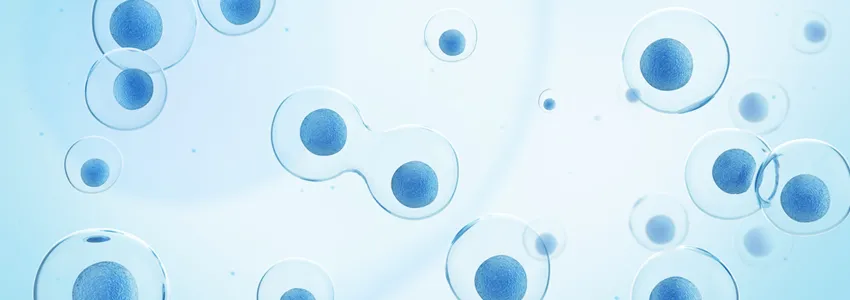
Photo by Anna Kireieva, Shutterstock.
Stanford Medicine Scope - August 31st, 2017 - by Krista Conger
We've all heard the saying "his eyes are bigger than his stomach" when a child overloads a plate of food at a picnic or smiled at the description of how the Grinch's heart "grew three sizes" after his fateful Christmas trip to Whoville. But, whimsy aside, it seems obvious that the size of organs like our hearts, stomachs, and lungs are predetermined during development. Fortunately, after adulthood, they rarely change much. But how does this happen? The cells that make up these organs have limited lifespans. How do our bodies ensure that, as old cells die off and new cells take their places, our organs don't grow abnormally large or shrink away?
Stem cell biologist Lucy Erin O'Brien, PhD, and former graduate student Jackson Liang, PhD, have spent a lot of time thinking about this issue, and they've uncovered an ingenious path of communication between the dying cells and the tissue-specific stem cells that generate their replacements. Their work graces the cover of today's print issue of Nature.
As O'Brien explained to me in an email:
We often think of stem cells as the 'stars of the show.' They're the glamorous cells, endowed with special powers to renew and regenerate organs. But despite their special powers, we found that stem cells aren’t the cells that are actually in charge. At least in adult tissues, the stem cells sit, relatively quietly, and wait for a signal from their differentiated neighbor cells to spur them into action. So stem and differentiated cells operate as true partners, with the differentiated cells taking the lead and the stem cells following this lead. It's absolutely crucial that the stem cells stay in lockstep with the differentiated cells. Because if they don't, you'll get either cancer-like overgrowth or atrophy.
The researchers tackled the question in the intestines of fruit flies, which share many features with those of humans. The tiny flies are good research subjects because they are easy to breed and their genes can be readily altered. Liang and O'Brien looked at the interaction between stem cell activity and the natural cellular turnover that occurs as old intestinal cells die off and are replaced by new intestinal cells arising from nearby stem cells. They found that the cells operate on a numerically precise "one out, one in" policy (people much cooler than me may see similarities with how a conscientious bouncer manages the traffic flow at an elite nightclub). The molecules involved in their interactions are two well-known players in growth and development.
As O'Brien explained:
These molecules that anchor this signal relay from dying cells to stem cells -- E-cadherin and EGFR -- are not new discoveries. They're both very well-known, and they've both been extensively studied, for decades. But here in the context of organ turnover, these two familiar molecules are linked together in a new and completely unanticipated way. It's been so fun to uncover that connection -- like discovering that two old friends from different walks of your life actually know each other and have their own relationship. Intriguingly, E-cadherin and EGFR are each individually implicated in particular cancers. Could they actually be cooperating to promote tumor development through some dysfunctional version of the normal renewal mechanism that we've uncovered?
Fascinatingly, there's a spacial aspect to their discovery as well. The signal emitted by the dying cell travels only a short distance to activate only nearby stem cells. This prevents an across-the-board response by multiple stem cells that could result in an unwanted increase in the number of newly generated replacement cells. In contrast, however, signals generated by the intestinal cells in response to injury or trauma are much more strident (think how yelling "fire" in that crowded nightclub summons a stampede of rescue personnel into the building).
As O'Brien said:
When cells are killed by trauma, they actually emit different signals compared to when cells die a natural death. As others have shown, these trauma-induced signals alert the stem cells that there’s an emergency, and they set off a chain of events that propagates across a wide swath of tissue, recruiting even uninjured cells to help repair the damage. By contrast we found that when cells die a natural death, the signals they emit — certain types of EGFs -- operate only within close range of the dying cell. It's like a whisper instead of a siren.



